4 : Troy’s South Tower and Gateway
I designed a South Tower module with attached gateway (SLD-M28-BK-101).
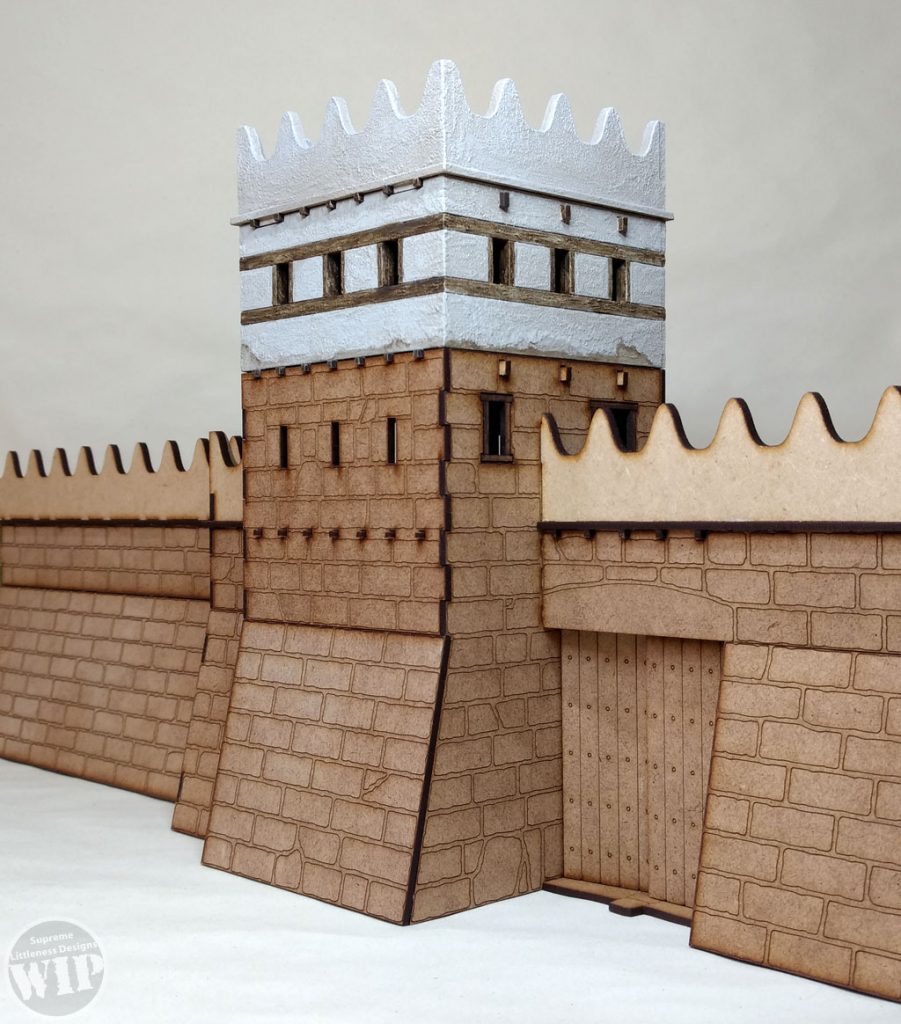
This was a redesign of my first attempt at the South Tower. I increased its height, changed the stonework design and took the stonework all the way up to the storey with the door to the curtain wall’s walkway as illustrated by Peter Connolly.
I worked through several designs of a gateway as a separate modular model before finalising the design of a combined tower and gateway. I mentioned in the last post that Troy was an endless building project in the Bronze Age. The wall that sticks out on left of the tower is an indication of that. The South Tower of Troy VI was built on top of the existing curtain wall, immediately flanking the gateway. This was much closer to the gate than the position of the previous tower. The protruding wall can be seen as the remains of that earlier tower. It’s always fun to include interesting features such as these that, in this case, made the fortifications of Troy VI what they were. Another minor detail are the flagstones in the centre of the thoroughfare. The model only has a few but they represent the slabs over the drain that ran down the middle of the paved street.
There are many who believe that this is Homer’s famous Scaean Gate. The gate is such a feature of the Iliad that there is, of course, a huge desire to locate it. Whether it is or not, the South Gate was the principle gate of Troy’s citadel with the main roadway leading to the summit of the mound behind.
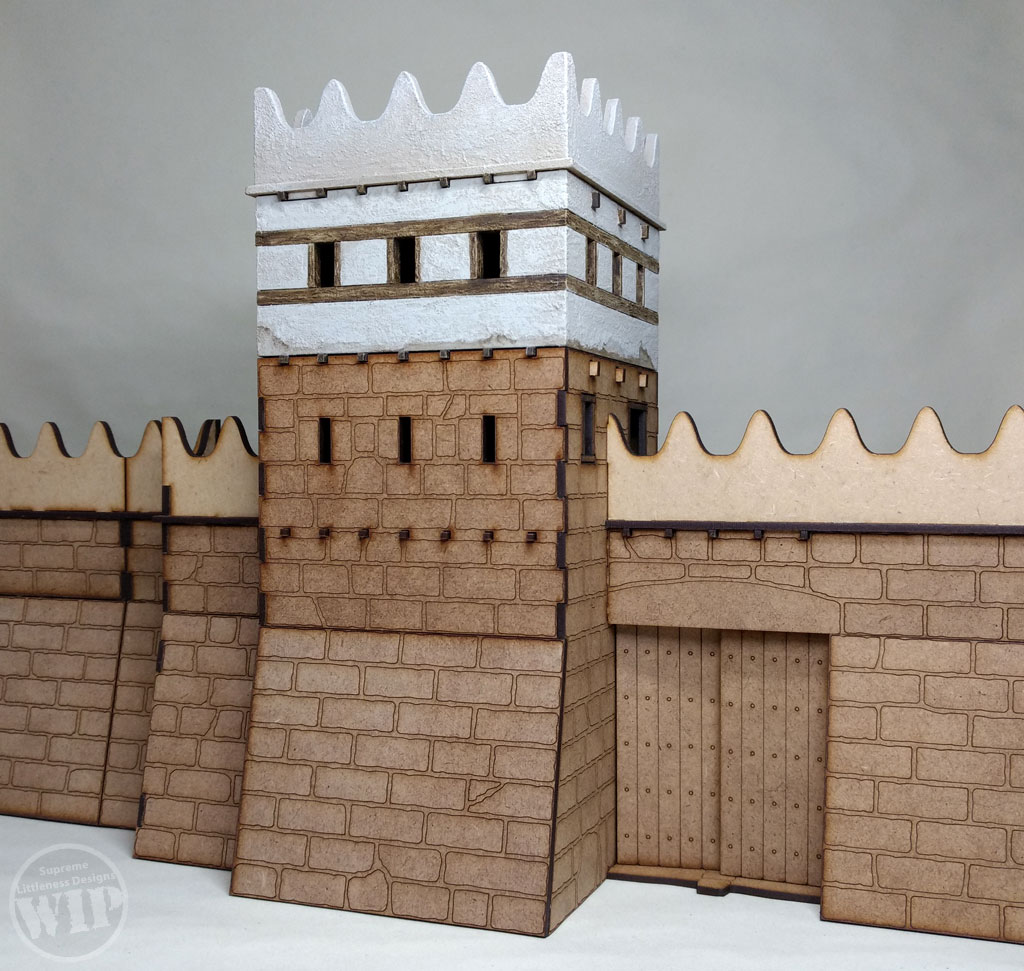
It should be noted that, quite surprisingly, there is lack of evidence of a portal in the opening – there are no pivot holes. As a result, there is no general consensus as to where the gates would have been positioned – and the sloped face of the curtain wall complicates things even more. Donato and Sarah Spedaliere’s illustration in Osprey Publishing’s book on the fortifications of Troy in keeping with Nic Field’s narrative, has the gates towards the internal face of the curtain wall. This may have given attackers the opportunity of cover under the lintel from missile fire from the ramparts above. I brought mine further forward – although not as far forward as Peter Connolly in his illustration of the South Tower where he adds vertical gate posts. My gateway borrows quite liberally from the remains of Mycenae’s Lion Gate. The lintel is smaller but similar to the Lion Gate’s. The idea is that when the South Tower was added it covered the original lintel slightly – although I’ve attempted not to make the stone lintel look too unsymmetrical. Of course, the lintel could have been made of timber (but that’s not so cool).
The Spedalieres’ tower is also shorter than Connolly’s by a whole storey with the stonework only up to a lower level – similar to my earlier design. For tabletop gaming, I think the choice of height is obvious. Big is beautiful. These are the great walls of Troy, after all.

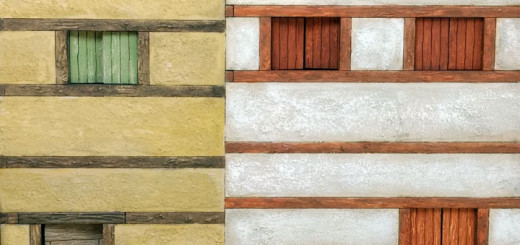
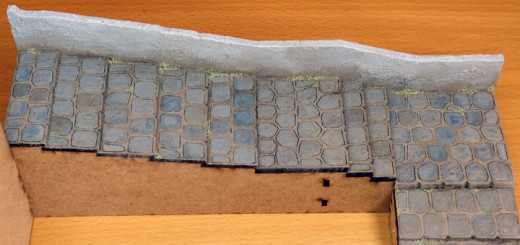
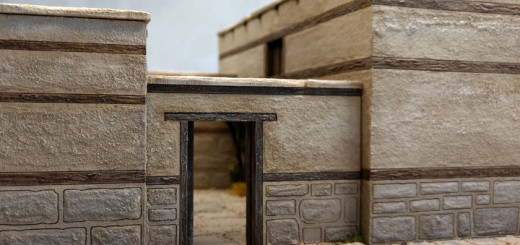
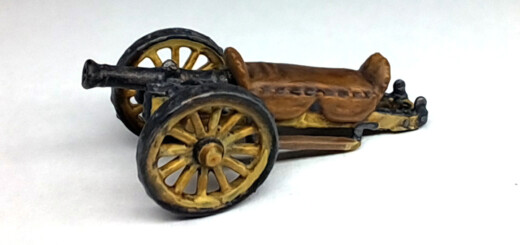
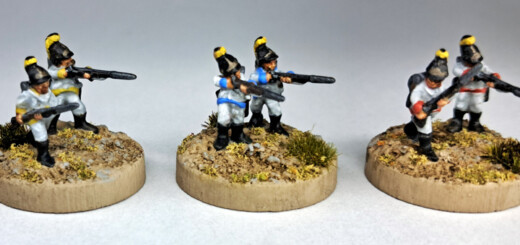
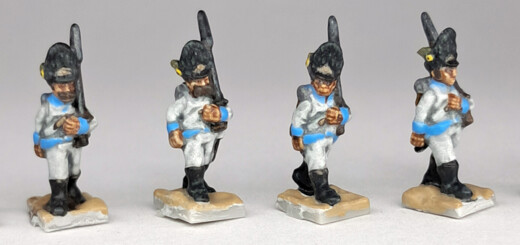
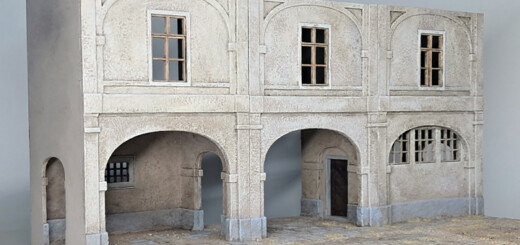
Can you please let me know what scale it is possible to buy the walls of Troy, Tower etc in please?
The kick-starter range was 28mm. The range is set to be made available in the new SLD webstore.